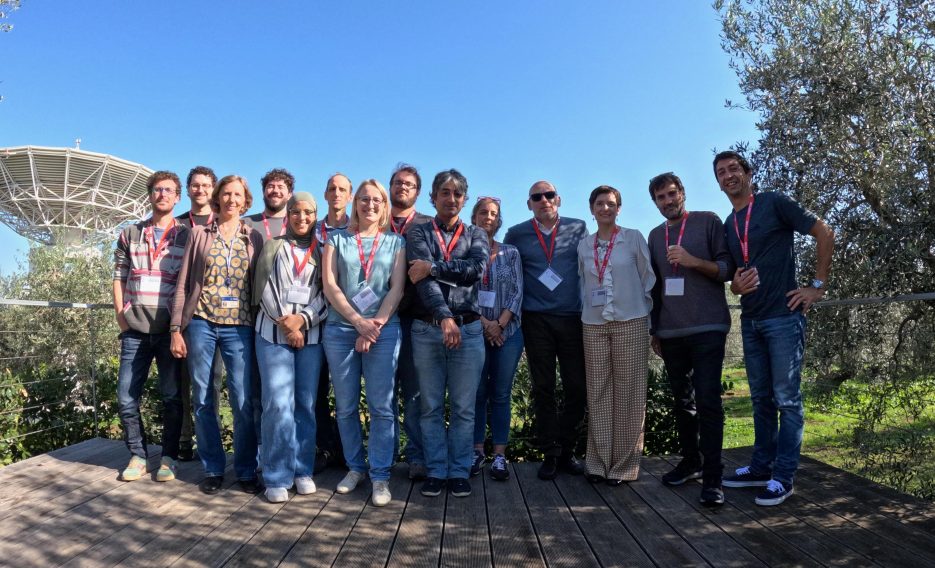From October 30 to November 6, 2024, the Science Hub of the European Space Agency (ESA) in Frascati, Italy, hosted an international workshop titled Grounding Lagrangian particles in satellite-derived oceanic flow fields. Organized in the framework of the 4DMED-Sea project the event convened 16 participants, including 11 senior experts and 5 early-career researchers from France, Spain, Italy, Netherlands and the USA. Its goals were:
- to assess unresolved challenges in particle trajectory modelling,
- propose actionable solutions, and
- collaboratively draft a scientific paper to inform and guide the wider community.
Advantages and challenges of Lagrangian modelling
Lagrangian modelling has proved to be a cornerstone for understanding transport, mixing, and dispersion processes in the ocean. However, the modelled results depend on the numerical scheme employed and require accurate input flow fields. Satellite-derived velocity products offer a unique advantage, providing globally gridded ocean currents from Earth observations with coverage across both open and coastal waters.
As one of the outcomes of the 4DMED-sea project activities, such flow fields have been generated for the first time at high-resolution and within the interior ocean, opening new research and application opportunities.
Despite this premise, unresolved challenges persist in coastal regions where particle grounding – when advected particles enter the coastline – might compromise accuracy. These errors are influenced by factors such as:
- Complex coastal dynamics, including unresolved multiscale processes.
- Intricate coastline geometries and bathymetric features.
- Limitations of satellite-derived flow fields in nearshore zones.
Grounding biases downstream analyses, leading to spurious trajectories, incorrect particle budgets, and the inability to differentiate true from false grounding events.
Workshop focus and outcomes
The workshop was structured to facilitate idea exchange, collaborative problem-solving, and synthesis of future directions.
Initial sessions provided a platform for reviewing the state-of-the-art, identifying knowledge gaps, and analysing the most pressing impacts of grounding. Participants discussed correction strategies for flow fields, techniques to adjust particle trajectories nearshore, and parameterizations of grounding.
Capitalising on the discussion, the group collaborated on drafting a scientific article that recapitulates the outcomes and proposes a framework to reduce uncertainties in particle trajectory modelling.
Implications and next steps
This effort aims to provide the scientific community with practical guidelines to address grounding-related biases, harmonize methodological approaches, and anticipate uncertainties in applied ocean modelling. Such advances are crucial for bridging the gap between academic research and societal applications, such as: marine protected area connectivity, fisheries management, search-and-rescue operations, tracking plastic pollution, oil spills, and other anthropogenic contamination events, underwater cabling, offshore wind farms, and environmental decision-making.
The peer-reviewed article, to be published in 2025, will contribute a reference for researchers and practitioners working with satellite-derived velocity fields and Lagrangian models. Stay tuned for the publication.

